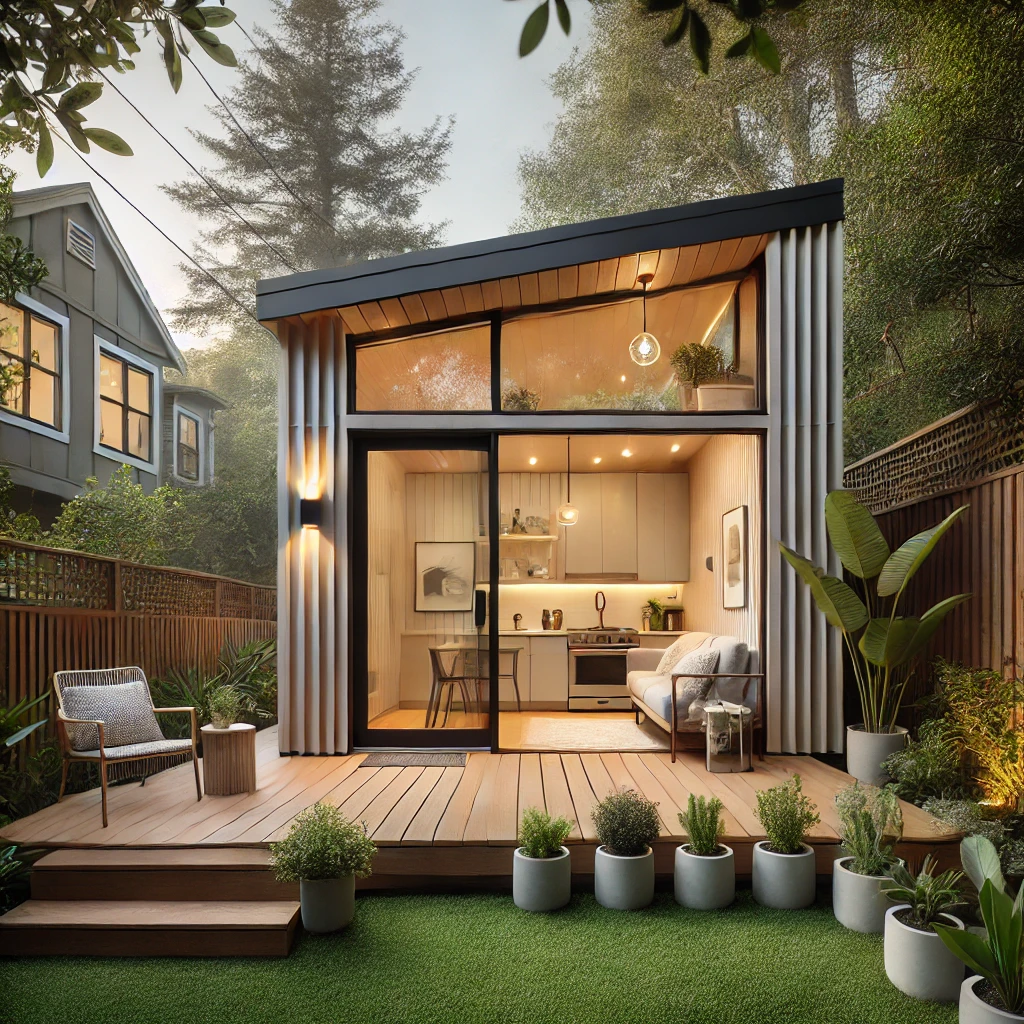As California continues to grapple with housing shortages and increasing property values, homeowners are exploring innovative ways to maximize their living spaces. One such solution that has gained popularity in recent years is the Junior Accessory Dwelling Unit, or JADU. At Griham Living, we specialize in creating these compact, efficient living spaces. In this article, we’ll dive deep into what exactly a Junior ADU is, how it differs from a standard ADU, and why it might be the perfect addition to your property.
Defining the Junior ADU
A Junior ADU, often abbreviated as JADU, is a small living unit created within the walls of an existing single-family home. Unlike a full-sized Accessory Dwelling Unit (ADU), which can be a separate structure or a conversion of an existing space like a garage, a JADU is always created within the main house’s footprint.
Key characteristics of a JADU include:
- Size: JADUs are limited to a maximum of 500 square feet.
- Location: They must be contained entirely within an existing single-family residence.
- Entrance: A JADU requires its own separate entrance from the main home.
- Kitchen: It must include an efficiency kitchen.
- Bathroom: A JADU may share a bathroom with the main house or have its own.
How JADUs Differ from Standard ADUs
While both JADUs and ADUs provide additional living space, there are several key differences:
- Size: Standard ADUs can be up to 1,200 square feet, while JADUs are capped at 500 square feet.
- Location: ADUs can be detached, attached, or converted spaces like garages. JADUs must be within the walls of the main house.
- Kitchen Requirements: JADUs only need an efficiency kitchen, while ADUs typically have full kitchens.
- Bathroom: JADUs can share a bathroom with the main house; ADUs must have their own.
- Parking: JADUs don’t require additional parking spaces, unlike some ADUs.
- Owner Occupancy: Many jurisdictions require the property owner to live in either the main house or the JADU, a rule that doesn’t always apply to standard ADUs.
Benefits of Adding a JADU to Your Property
- Increased Property Value: Like standard ADUs, JADUs can significantly boost your property’s market value.
- Rental Income Potential: A JADU can provide a steady stream of rental income, helping offset mortgage payments or other expenses.
- Multigenerational Living: JADUs offer an ideal solution for families looking to house aging parents or adult children while maintaining privacy.
- Flexibility: As needs change, a JADU can easily transition from rental unit to family space to home office.
- Lower Construction Costs: Since JADUs are created within existing structures, they often cost less to build than standard ADUs.
- Simplified Approval Process: Many California jurisdictions have streamlined the approval process for JADUs, making them quicker and easier to permit than full-sized ADUs.
- Energy Efficiency: The compact nature of JADUs often translates to lower utility costs and a reduced carbon footprint.
JADU Regulations in California
While California has passed statewide legislation to encourage JADU construction, specific regulations can vary by city and county. However, some general rules apply across the state:
- Only one JADU is allowed per single-family residential lot.
- The property owner must live in either the main house or the JADU.
- JADUs cannot be sold separately from the main house.
- Short-term rentals (less than 30 days) are typically prohibited.
- No additional parking is required for a JADU.
It’s crucial to check with your local planning department for specific regulations in your area.
Design Considerations for JADUs
When planning a JADU, consider the following design elements:
- Efficient Layout: With limited space, every square foot counts. Clever storage solutions and multi-functional furniture can maximize usability.
- Natural Light: Incorporate windows or skylights where possible to create a sense of spaciousness.
- Sound Insulation: Since JADUs share walls with the main house, good sound insulation is crucial for privacy.
- Separate Systems: While JADUs can share some utilities with the main house, separate electrical panels and HVAC systems might be beneficial.
- Accessibility: If designed for aging relatives, consider incorporating universal design principles for ease of use.
The JADU Construction Process
At Griham Living, we guide homeowners through every step of the JADU construction process:
- Initial Consultation: We assess your property and discuss your goals for the JADU.
- Design Phase: Our team creates a custom design that maximizes your available space.
- Permitting: We handle all necessary paperwork and liaison with local authorities.
- Construction: Our skilled contractors efficiently build out your JADU with minimal disruption to your main living space.
- Final Inspections: We ensure all work meets or exceeds local building codes.
Is a JADU Right for You?
Junior ADUs offer a unique opportunity to add living space and value to your property, often with less investment and complexity than a standard ADU. They’re particularly well-suited for:
- Homeowners looking to house family members while maintaining privacy
- Those seeking to generate rental income without major construction
- People wanting to age in place by creating a space for a caregiver
- Homeowners in areas with strict ADU regulations but more relaxed JADU rules
JADU Experts
Whether you’re looking to create space for family, generate income, or simply increase your property’s value, a Junior ADU could be the perfect solution. With their compact size, flexible use, and relatively straightforward approval process, JADUs are becoming an increasingly popular choice for California homeowners.
Ready to explore whether a Junior ADU is right for your property? Contact Griham Living today. Our team of experts is ready to guide you through every step of the process, helping you unlock the full potential of your home.


